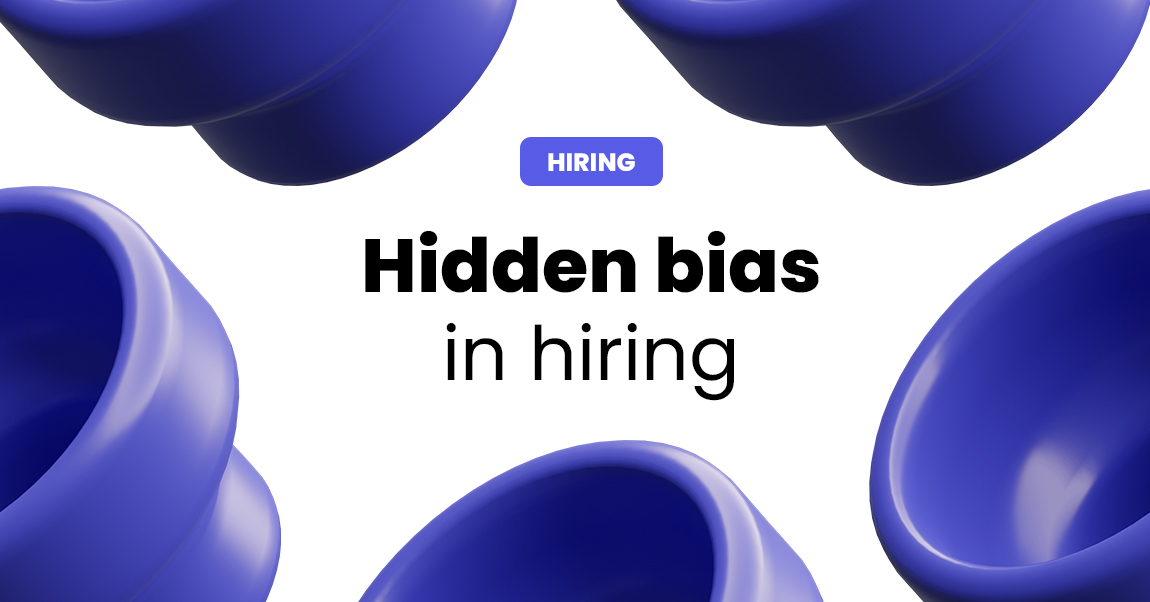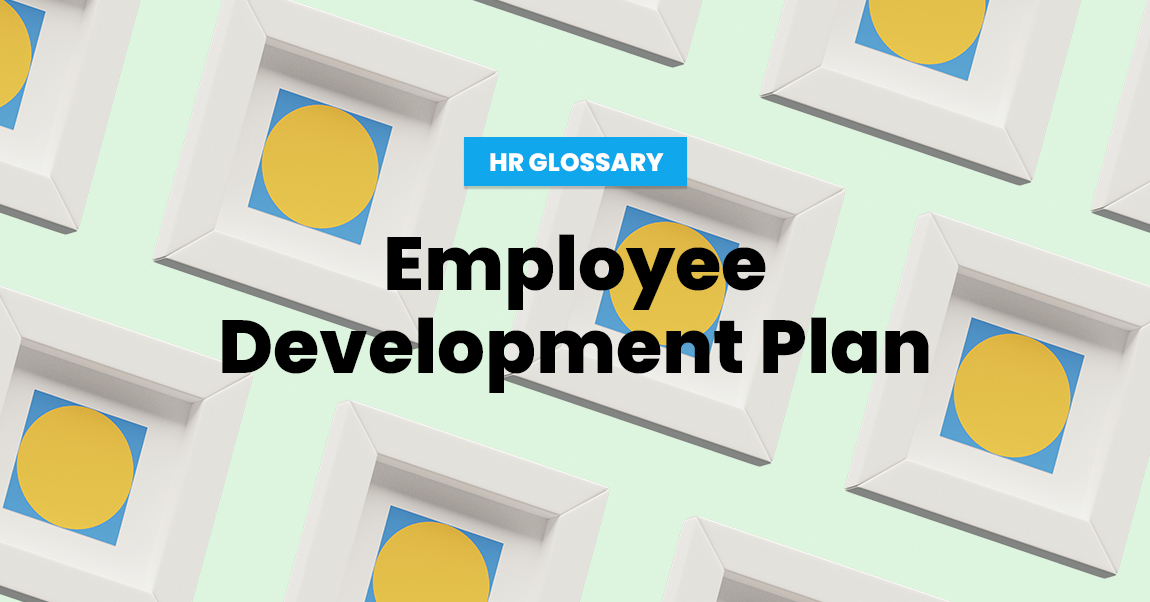Fostering an inclusive culture seems to be the ultimate goal for most companies. Still, not all of them are willing (or able) to dig deeper to spot and resolve undiscovered issues, prejudice, and hidden bias in hiring. However, since recruiting a diverse workforce can be the most effective way toward a successful future, it’s imperative to learn the best practices that will help you identify and fix the problems smoothly.
Make sure to read our tips & follow the steps that will help you reduce unconscious biases in recruitment (and beyond).
What is meant by hidden bias in hiring?
Unconscious bias is a hot topic right now. This field is increasingly gaining researchers’ interest, in social psychology particularly. It has caught the attention of many businesses worldwide, massive players like Google included. So, before we dig a bit deeper, let’s cover the basic meaning of this term.
In simple words, it stands for a type of prejudice in favor of or against someone or something. So, it can be aimed at an individual, a group of people, or a specific thing. Usually, biases seem, feel, and are unfair. When it comes to the workplace, these sorts of partialities and prejudice include gender, race, age, religion, sexual orientation, and more. It can even be tied to someone’s height, weight, or personality type. Now, there is a major difference between conscious and unconscious bias. The second kind is the one we’ll be talking about. And its nature is unintended and subtle. And because of that, it’s often undetectable and gradual. Still, just because it usually flies under the radar, that doesn’t diminish its negative impact.
Beware: Hidden bias in hiring makes you lose money & top talent!
Recognizing and reducing bias in a snap needs to be a priority. Because if you drive partial decisions when looking for new employees, you’re likely to face severe consequences in the long run. First of all, your teams won’t be diverse. And it is known that diversity substantially promotes engagement, motivation, and productivity. Moreover, it brings fresh approaches and innovation to the table. Heterogeneous environments are always more successful, skillful, and content. So, you’ll instantly feel the impact on employee experience and satisfaction and also see how it influences your company’s results.
And, of course, casting a wider net means simplifying, shortening, and improving recruitment processes and outcomes. That also has tremendous power over multiple key aspects, including money. But more importantly, it will affect your brand and reputation.
How do you identify recruitment bias? [3 examples & simple tips]
When you look to hire a new, skilled team member, discriminatory decisions and choices can have a devastating effect. So, even though some recruiters and managers aren’t aware that they’re clinging on to unconscious biases, their aftermath is still present. And very much harmful. Now, let’s see the most common scenarios and make sure to stop them from happening.
Stop looking to hire a mini-me
Assessing an actual hiring need and looking to fill it quickly and smoothly is every recruiter’s goal. And surely, there are always some key points, skills, and traits to take into account. However, it’s sometimes difficult for a recruiter to estimate whether a candidate truly is a match or whether they seem suitable just because they share some common qualities, background, or interests. Hiring based on similarities above other criteria is just bad.
So, how to avoid this ridiculous mistake? First of all, make sure to collect the relevant data to support your choices and decisions. These facts and points will indicate whether someone really is a good hire.
Trust your guts – but keep it real
No business decisions should be led by human intuition. If your hunch seems to be right nearly every time, that’s still not a good reason to hire someone. Or dismiss them, for that matter. For once, these criteria are impossible to standardize. Plus, each person’s intuition works differently. So, the smart thing here is to just turn off the subjective, inside voice (as much as possible) and stick with tested patterns and recruitment practices like skills-based hiring or outstanding performance.
Don’t compare applicants against each other
The tendency to compare resumes against one another is very common. But it’s still a no-good practice. Since recruiters’ perceptions of what a perfect CV should be like always differ, even by a little, this sort of comparison is all wrong and leads nowhere.
And here’s the ideal moment for screening technology to take over. Automated processes remove hidden bias in hiring. So start by using an applicant tracking system or another suitable recruitment tool that will simplify the whole drill, plus make it more fair and unbiased.
💡 Extra tip: Find the root of your problem
Unconscious bias in recruiting always has some sort of origin. And you better find it – fast! Relying on proven practices is a great way to improve your processes. So is relying on technologies and tools. But none of it will drive excellent results if we don’t ensure to make ourselves more open-minded, tolerant, and better. Dedicating some extra time to embrace eye-opening facts and live, work, and hire accordingly is the key. Some courses and workshops can help out the entire team with its recruiters and managers understand the ways to boost diversity and strengthen a company’s culture. Begin your journey by thinking about how you assess people and source those key competencies impartially. Take up different viewpoints and experiences, and appreciate those who are also unbiased and broad-minded.
How do you avoid bias when hiring? [4 easy steps]
Pay attention to the words that indicate gender bias in the hiring process
Gendered wording often gets overlooked. But still, masculine-coded language is something women across the globe can detect. So, words like “driven,” or “challenge,” or “decisive” can trigger a wrong set of emotions in female applicants. Knowing that, it’s crucial that you boost hiring experience in job ads to get more qualified candidates to apply. Start by writing a clear and precise job title, then just keep it simple and understandable. Keep in mind those points that your best candidates actually hope to learn. And feel free to mix things up and apply some feminine-coded terms like “committed,” “support,” or “interpersonal.” Ultimately, feel free to explore some useful tools for writing job descriptions. Textio will help you reach out to a more diverse audience. And a solution like Moz will do the magic when it comes to SEO.
👀 Bonus tips to avoid all biases & promote inclusion in job postings
Aside from using a gender-neutral language, there are several more aspects to consider when writing an inclusive job description. Since multiple studies show that 55% of applicants pay close attention to wording, it’s best to give your postings a once-over and take a few extra moments to make them more engaging and all-embracing.
So, make sure that you avoid all biases that could be linked to the candidates’ age. For instance, if your brand-new job opening is lit AF, don’t expect to receive resumes from anyone who’s off TikTok & Instagram. The same goes for more “busnessy” phrases like “digital natives.” It seems legit to use a term like this, but that’s only going to help you attract Gen Z candidates (and possibly some Millennials). While at it, double-check the usage of jargon in your job ad. Is all that industry-specific terminology really necessary? And finally, don’t forget to emphasize those policies and benefits that show how important diversity and inclusion are to your company.
Use technology to boost diversity
Tech tools can help you analyze your needs and actions more carefully and make data-driven decisions. There are many tools and techniques at your disposal. So, you could give AI & gamification a try to set up a more objective recruitment process. But there are also many more simplistic tools and gadgets that will bring the best results and more diverse candidates (and hires). For example, Entelo Diversity can encourage you to find and source skilled people from under-represented groups.
Watch out for hiring biases in the interview process
To lessen the odds of any hidden bias, it’s imperative to have a structured interview process. By following specified patterns, you will be able to fairly benchmark each candidate. So be sure to test all your applicants in the same way. Prepare a specific set of questions for every person that enters your talent pipeline, and see where you go from there.
Here’s another piece of advice: Try out asynchronous interviews. It starts by sending an opening interview video that’s exactly the same for each talent. Then, every single person who’s a potential hire will get the same opportunity to show their knowledge and skills.
Spot & wipe out hidden biases in the workplace
So, here’s the ultimate truth (spoiler alert: it ain’t pretty): we all have some unconscious biases. However, spotting them and removing them from our working environment is crucial. Try following these simple tips to avoid the negative influences of implicit partialities and prejudice:
- Think your actions through and through regularly,
- Ask for feedback and understand the impact of your own behavior,
- Encourage the actions that lead toward mentoring and coaching so that all colleagues can get equal opportunities for development and career growth,
- Learn to recognize and appreciate different capabilities and preferences,
- Know if someone feels like an outsider and do your best to address the issue quickly.
Finally, make sure to amplify your knowledge of this vital topic. Attend courses and programs that will help you overcome any gaps and problems that lead to preconceived ideas and unfairness. That way, you’ll contribute to building a healthy workplace and diminish some of the key reasons for job dissatisfaction.
Follow this guide & get rid of hidden bias in hiring practices
Finding an easy way to spot hidden biases in hiring practices and ensuring to get rid of them asap is essential. So, make sure you follow the simple steps we’ve mentioned in this guide. Start with taking a closer look at the potential problem. Find its root and determine whether the biases in your recruitment process are truly unconscious. Then, follow the guidelines that will help you remove any prejudice from every stage of your search for a new employee.
📢 Wanna hear another piece of advice? Finding a skilled and trustworthy recruitment agency will also help you make sure all biased decisions are eliminated. And that will result in a bigger talent pool, more opportunities, and a lot of other perks!




